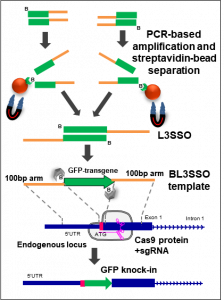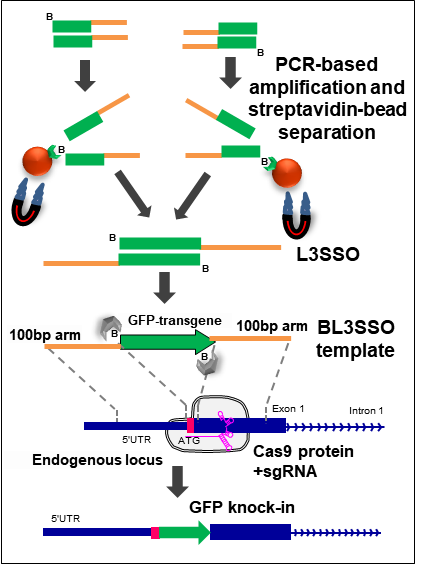Check out new research out of the Lau Lab and Saeed Lab.
New Research will Allow Convenient Investigation of Human Innate Immune Response to Viral Infections
(Boston)—Researchers from Boston University School of Medicine (BUSM) report the formation of human cells containing a green fluorescent protein or GFP (one of the most important proteins in biology and fluorescence imaging) genetically fused with two interferon stimulated genes (ISGs), namely Viperin and ISG15. This new creation makes these cells highly valuable reagents for reporting innate immune responses to viral infections, including those caused by coronaviruses.
These engineered cells, which turn green when treated with interferon, are highly novel because this is the first time a reporter gene (a gene that enables the detection or measurement of gene expression), such as GFP, has been inserted into endogenous loci of ISGs.
Viral infections cause human cells to sound a biochemical alarm via interferon signaling, leading to a high-level expression of ISGs. However, ISGs are very tightly regulated genes, because too much expression and an inability to later tamp down ISG levels can be just as detrimental to cellular health.
This overactive innate immune signaling leads to a ‘cytokine storm’ (when an infection triggers the immune system to flood your bloodstream with inflammatory proteins called cytokines) that distinguishes a mild case of virus infection from fully debilitating symptoms, an outcome all too prevalent in the COVID19 pandemic. “Better research tools for studying ISG regulation are still needed, not just now for coronavirus research but for many other viruses that our society will contend with,” explained co-corresponding author Nelson Lau, PhD, associate professor of biochemistry at BUSM.
In order to successfully tag human antiviral genes with GFP, the researchers first needed to produce a new methodology for creating a long DNA repair template for more efficient and authentic CRISPR-Cas9 genome editing in animal cells. They named his template methodology the BL3SSO (sounds like “blasso”) because it sets up the DNA for more accurate repair and for introduction of a fluorescent transgene like GFP into the site cut by Cas-9 during genome editing.
These findings are the result of a collaboration between the Lau lab and the lab of Mohsan Saeed, PhD, both faculty members in BUSM’s department of biochemistry and investigators at the BU National Emerging Infectious Diseases Laboratories (NEIDL).
These findings appear online in the journal G3 : Genes | Genomes | Genetics.
